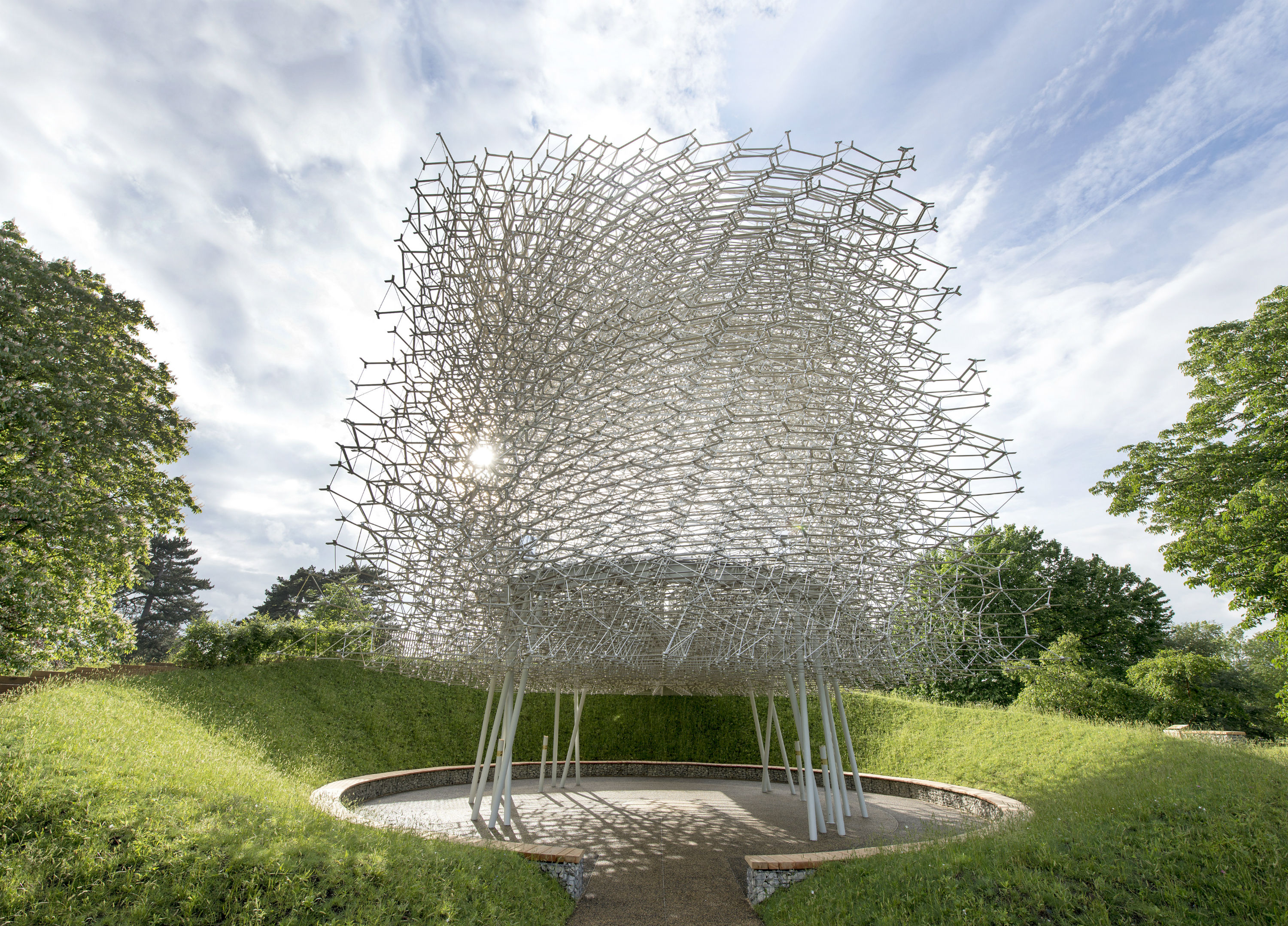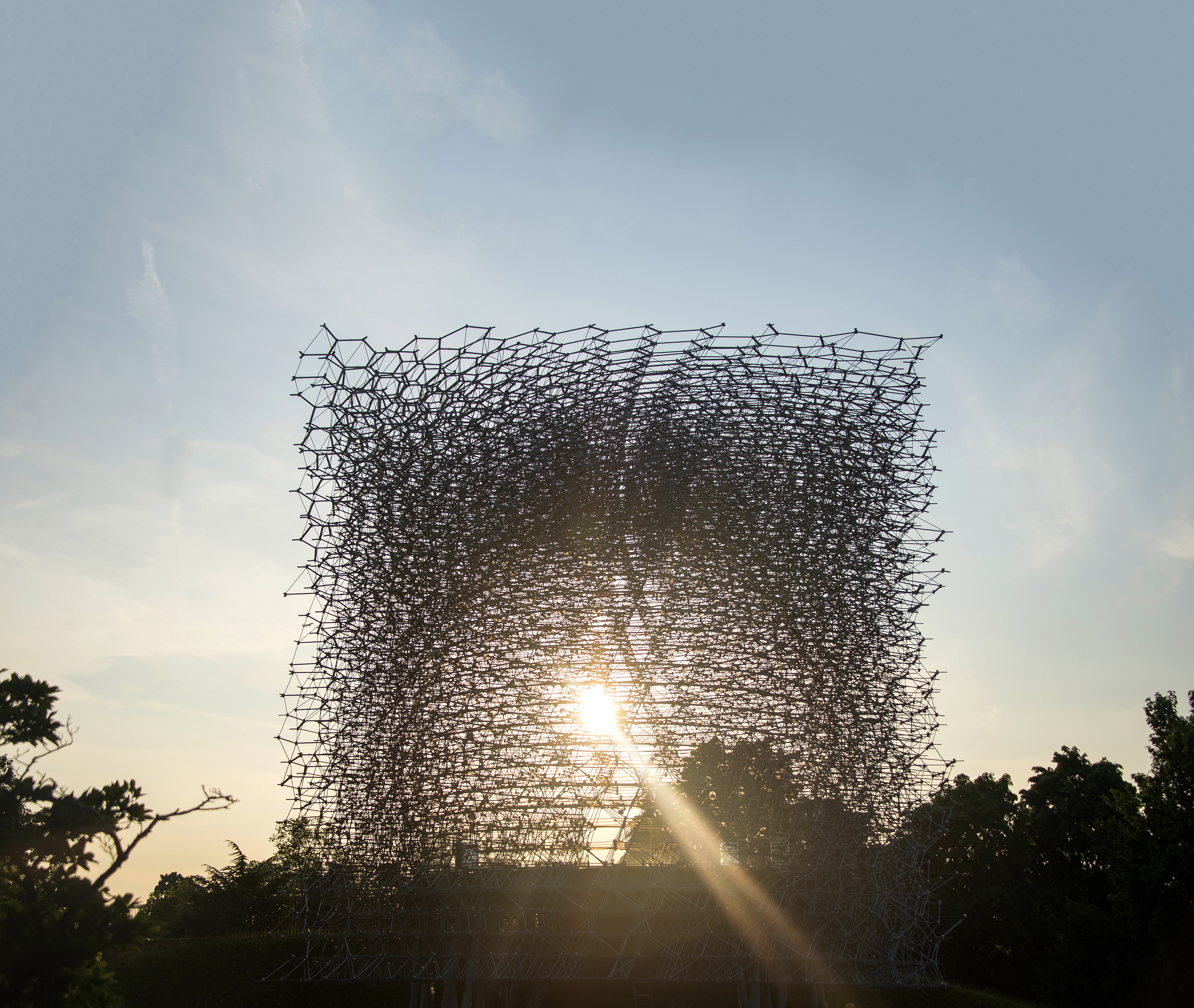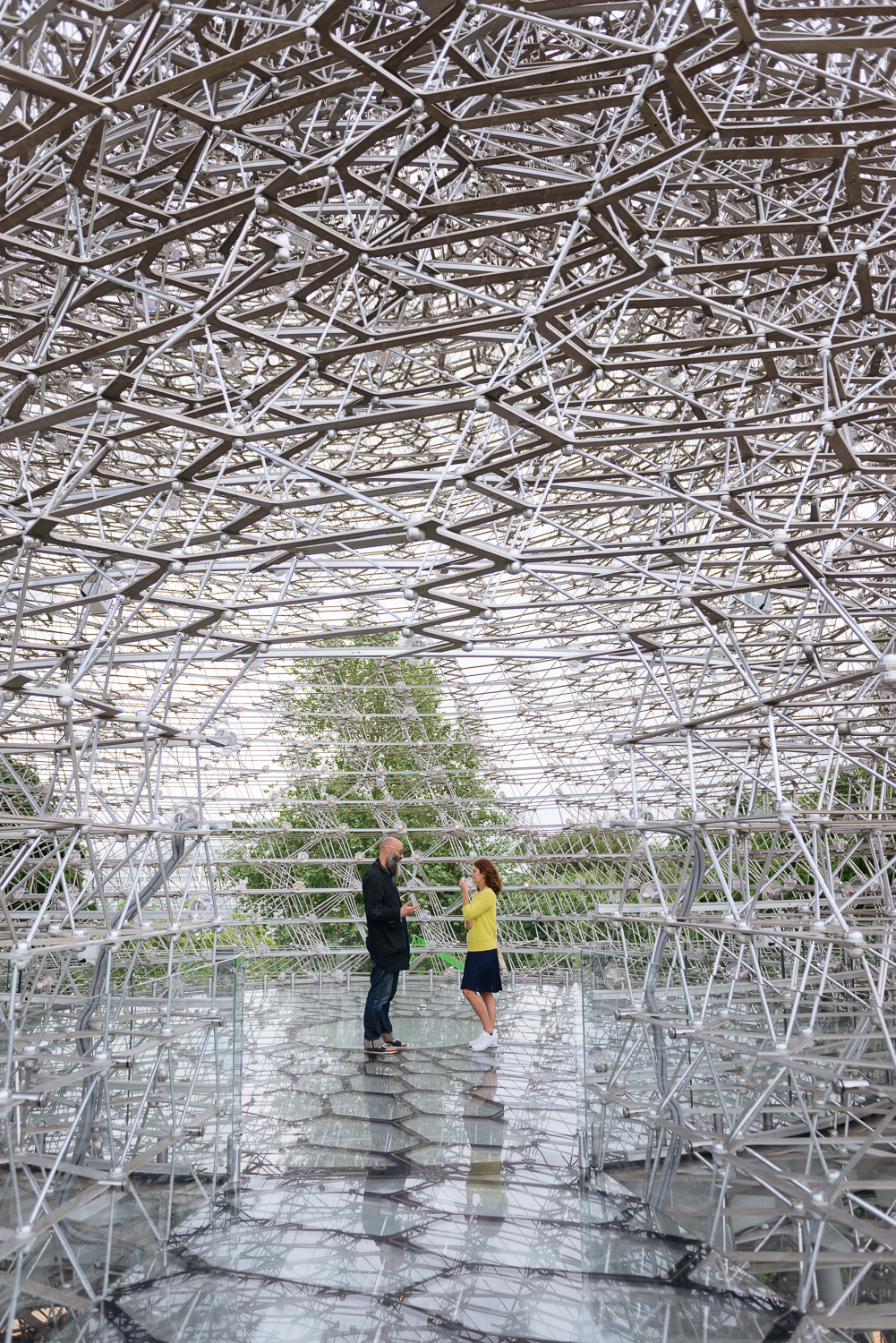Step Into a Hive
Wolfgang Buttress’ giant sculpture interprets the activity of a real beehive.

The Hive. Credit: Jeff Eden
If you’ve ever wondered what it would be like to stand in the middle of an active beehive, you might want to put this giant sculpture in London on your to-do list.
The Hive is an installation by Nottingham artist Wolfgang Buttress, who originally conceived the bio-inspired sculpture for the Milan Expo in 2015. The Expo’s theme was “Feeding the Planet,” and Buttress was inspired by the role that bees play in pollination. The sculpture ended up winning top prize and has now been moved to Kew Gardens for two years.
Standing nearly 56 feet tall and 46 feet deep, the Hive consists of 169,300 aluminum pieces that are tightly interlocked in a hexagonal pattern, forming an oblong shape evocative of a beehive. From a distance, the sculpture looks like a swarm. But as you home in on the architecture, says Buttress, “you then get a sense of the hexagons of this abstracted honeycomb pattern, this latticework.”

As a visitor enters the hollow structure, she might notice 1,000 LED lights strung around the scaffolding, flickering and alternating hues.
The changing luminescence is triggered by the energy inside two honeybee hives, located just hundreds of feet away from the sculpture. An accelerometer designed by physicist and bee expert Martin Bencsik tracks the vibrations generated within the beehives and channels that energy to the LEDs. When activity in the hives increases, the lights in the sculpture transition from white, to yellow, to orange, to red (the colors are inspired by the colors of wildflower pollen found in the meadow where the Hive is located).
“These lights respond in real-time,” Buttress says. For example, “in the middle of the night, when the bees are calmer, the actual light display itself is more gentle and pulsing. When the bees are more frenetic and going in and out of the hive, this is also expressed by the lights.”
A guest in the Hive will also hear parts of a soundtrack recorded with 12 musicians and 40,000 real honeybees, intended as musical “dialogues” between humans and these buzzing insects. The musicians, who include Bencsik’s cellist wife and the current drummer of the band Spiritualized, improvised while listening to recordings of bee noises. When the accelerometer senses specific activity levels in the real beehives, interludes from the soundtrack resound through the sculpture.
As a result, no two moments inside the Hive are the same. Governed by bees going about their business, the ambiance is unique each time someone steps inside.

The immersive experience continues in a room underground, where visitors can interact with devices that simulate one method of bee communication. According to Bencsik, researchers think honeybees are deaf and thereby rely on vibrations, as well as smells, to help them convey messages, such as asking for food or challenging another bee to a fight. Buttress had to come up with a way to help humans understand the behavior without using sound.
Visitors are instructed to bite on a wooden straw and then touch the end to a post in the wall that vibrates with a pre-recorded “message” (one such message is known as the “waggle dance” and is used by bees to indicate the location of nearby food).
“So, you receive a vibration through your teeth, through that shaker [the wall post], and the vibration conveys into your bones,” says Bencsik, a reader at Nottingham Trent University and a collaborator on the Hive. “It’s a tiny, tiny vibration, [but] the vibration in your skull will feel to you as if you were hearing a sound,” somewhat similar to how bees sense these silent messages in their hives (of course, bees don’t have bones).
In creating his sculpture, Buttress’s goal was to go beyond a purely artistic interpretation of a beehive. “To me, it was really important that the whole experience in the Hive related to the bee,” he says, and that “you’re conscious in real-time of actually what’s happening to the status of a honeybee in a hive. That makes it lot more powerful, pertinent, and personal.” He adds, “For it to work, it needed to have science at the heart of it.”
Chau Tu is an associate editor at Slate Plus. She was formerly Science Friday’s story producer/reporter.